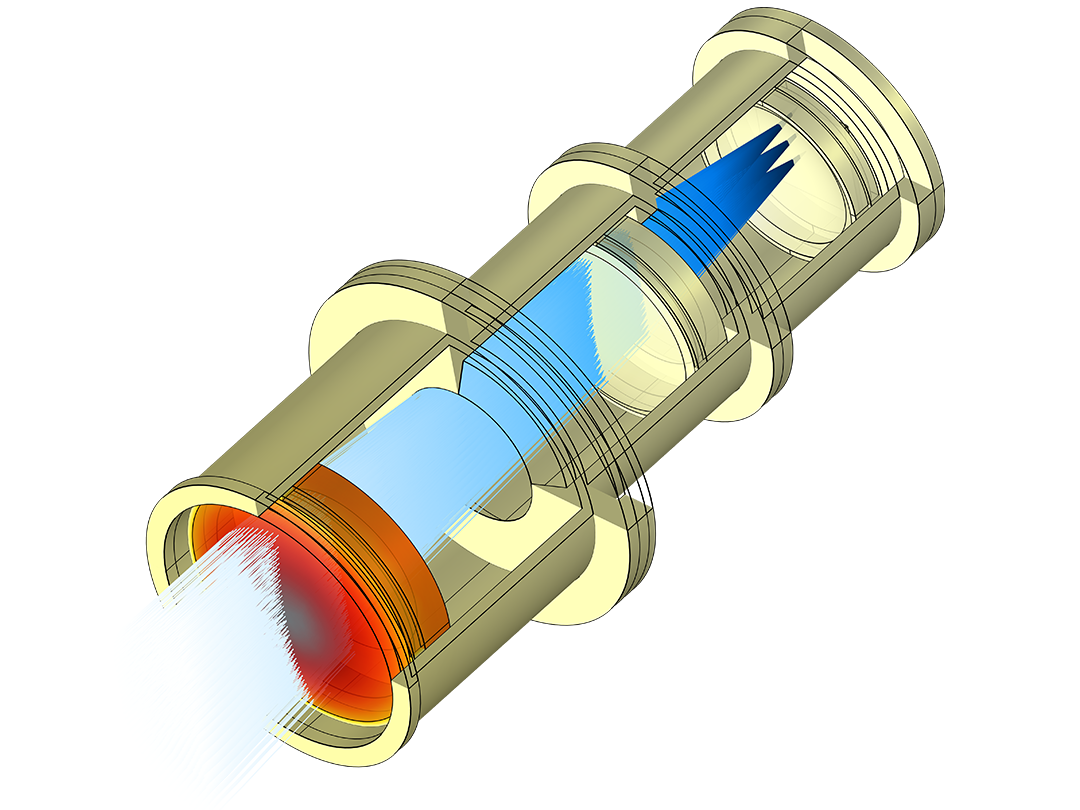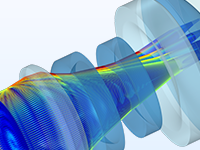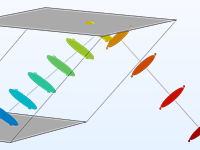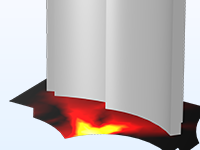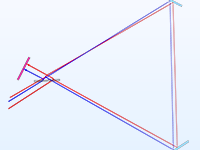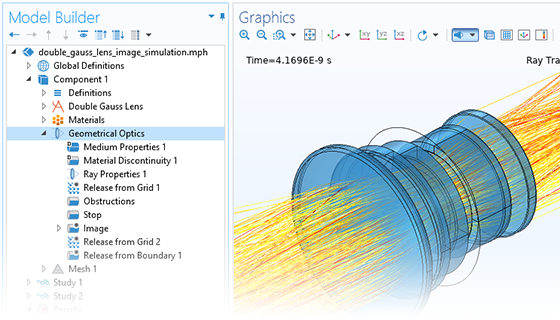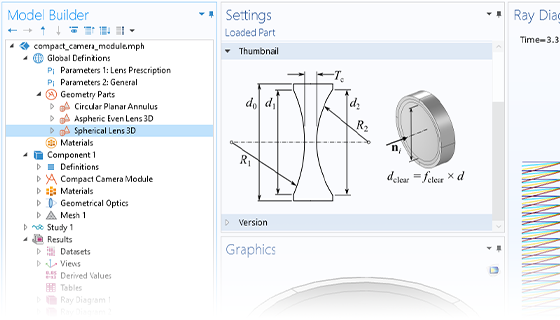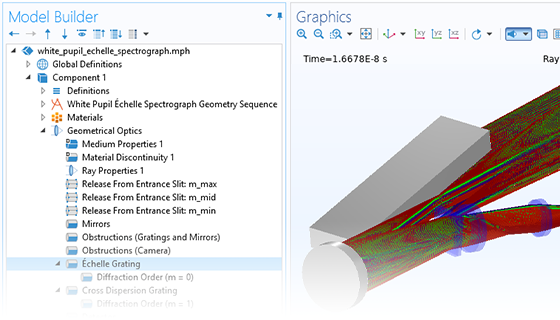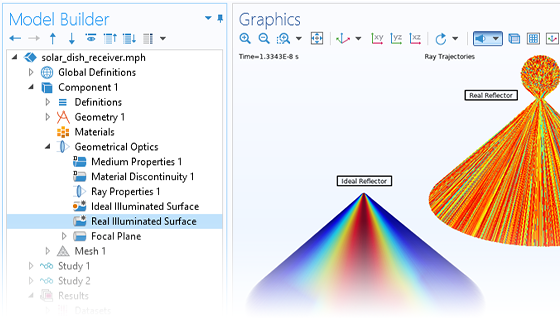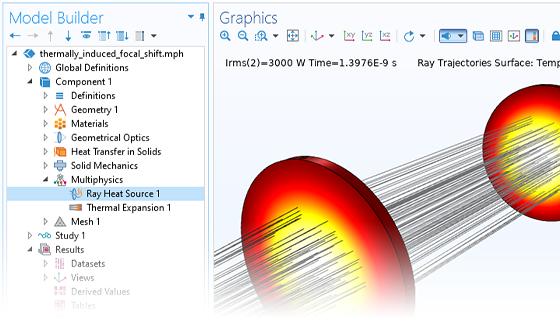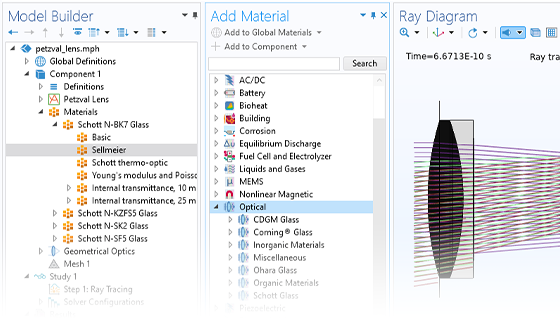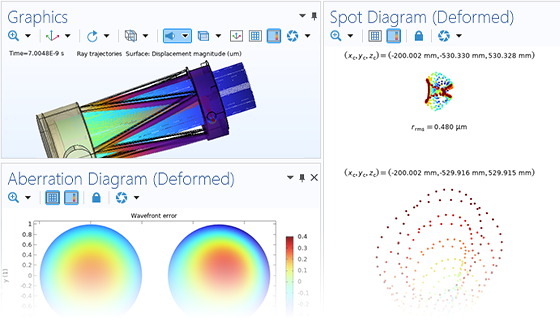STOP Analysis
Optical systems can be extremely sensitive to changes in their environment, including high altitudes, space, underwater, and in laser and nuclear facilities. Such optical systems are subjected to structural loads and extreme temperatures. The most accurate way to fully capture these environmental effects is through numerical simulation via a STOP analysis. With the COMSOL Multiphysics® software, you can combine structural, thermal, and optical effects in a single model, so that rays are traced in the thermal-stress-induced deformed geometry while the built-in material models account for temperature-dependence of the refractive index.
You can also combine the Ray Optics Module with other add-on modules that offer expanded structural and thermal modeling capability — for example, to account for thermal radiation, conjugate heat transfer, hyperelastic materials, and piezoelectricity.


